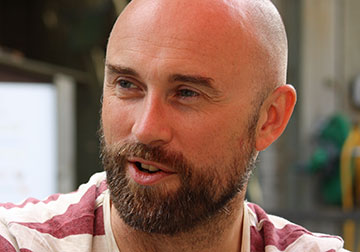Texas Prepares for 2014 Hurricane Season
 After an unusually long and harsh winter and recent flood episodes that caused not only loss of property, but also loss of lives, the last thing Texans want to hear about is the threat of another possible natural disaster. But, Sunday, June 1st, 2014 marked the official opening of hurricane season and that’s not something Texans take lightly.
After an unusually long and harsh winter and recent flood episodes that caused not only loss of property, but also loss of lives, the last thing Texans want to hear about is the threat of another possible natural disaster. But, Sunday, June 1st, 2014 marked the official opening of hurricane season and that’s not something Texans take lightly.
Residents of the Lone Star State are hoping this year will be a repeat of the 2013 season. Last year’s Atlantic hurricane season was among the quietest in history. Predictions were that there would be 13-20 tropical storms to develop in the Atlantic, seven to 11 of which would become hurricanes and three to six of which were expected to reach major storm classification. When the season ended, there had been only two minor hurricanes.
However, as most emergency personnel will tell you, it only takes ONE of the big ones to cause death and destruction. Just ask residents of the Northeast about Super Storm Sandy in 2012. That area is still picking up the pieces from the storm – which combined a hurricane and a winter storm – that caused more than $50 billion in damages. For that reason, Texas emergency management officials are warning the state’s residents who might be affected both along the coastline and inland not to get complacent after last year’s ho-hum hurricane season.
“One of the best defenses against the destructive – and potentially deadly – power of a hurricane or tropical storm is early and adequate preparation,†said Texas Department of Public Safety Director Steven McCraw (pictured). “Although residents living along the Texas coast are the most vulnerable, storms can disrupt and endanger the lives of residents throughout the state.â€
This year, only eight to 13 tropical storms are being projected, with three to six possibly becoming hurricanes. No more than two of those are expected to be major storms.
That might be described as a “below average†season. Since 1981, an average season has produced a dozen named storms. Of those, six became hurricanes and three were described as major storms, with winds of 111 miles per hour or higher.
When a hurricane does develop and makes landfall, National Oceanic and Atmospheric Administration Director Kathryn Sullivan reminds that damages can be attributed to more than wind and rain. “Sandy reminded us that loss of life and property during a storm doesn’t necessarily come about from wind and rain. It comes from storm surge.â€
DPS Director McCraw reminds Texans that all Atlantic and Gulf of Mexico coastal areas are possible landfall sites for hurricanes or tropical storms. And in some cases, a storm can create devastating conditions over land even if landfall does not occur, because the strongest winds in a storm are not necessarily in the center of the storm.
McCraw notes that in many cases, catastrophic damage can occur not just on the coastline, but also several hundred miles inland, with winds in excess of 155 miles per hour. Hurricanes and tropical storms also can create tornadoes and flooding.
DPS urges Texans to be ready for hurricane season by following a few safety tips, including creating an emergency kit with important documents, supplies and provisions; having an evacuation plan in place; keeping informed of changing weather conditions in the area; and considering special needs for the elderly or persons with disabilities.
A duo of meteorologists from Colorado State University who issue their forecast for the hurricane season each spring have also predicted a season with fewer than usual tropical storms and hurricanes in the Atlantic, in spite of the fact that 12 of the last 20 seasons have been above average.
But, Texans are reminded again – it only takes ONE.
16-24












2014
879 views
views
0
comments